Essential Machine Knitting Tools & Accessories
Maybe you just picked up a secondhand knitting machine from an online marketplace. Or perhaps you’re starting fresh with a brand new Silver Reed LK 150. New knitting machines usually come with most of what you need to get started, while used ones might be missing a few essential tools.
In this post, we’ll walk you through everything you need to begin your machine knitting journey. We’ll also suggest a few extras that don’t typically come in the box but are handy to have on hand, especially when following patterns or just getting started.
Also, we will link to helpful resources throughout this post, and at the bottom, you’ll find a Quick-Reference Checklist PDF you can use to keep track of what you have.
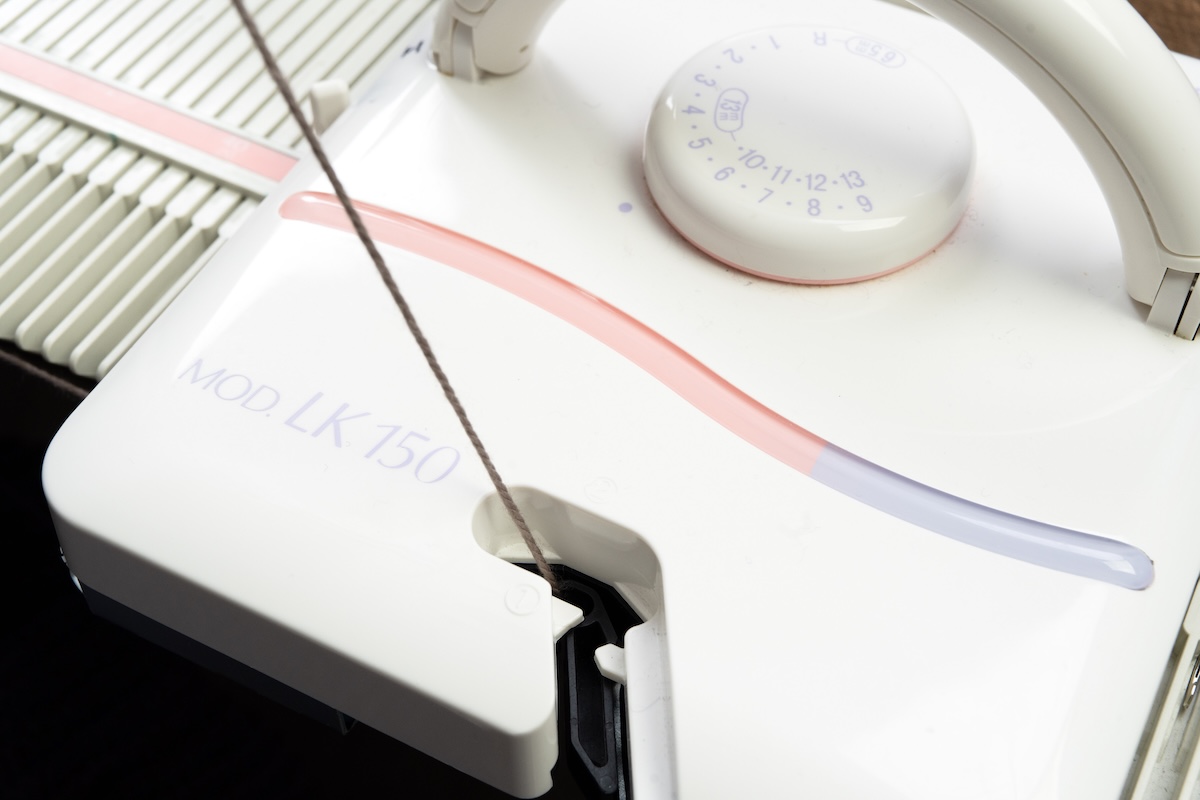
The Essential Equipment
Of course, the machine and yarn are non-negotiables. Without them, nothing happens.
Knitting Machine
At SweetGeorgia, we offer the Silver Reed LK 150 and use this machine when we teach our machine knitting courses at the School of SweetGeorgia. While many knitting machines work similarly, each one has its quirks. If possible, try to track down the original manual that came with your machine. If it’s an older model, you might be able to find a PDF version online.
Yarn
When it comes to yarn, you have plenty of options. Keep in mind that each machine is built for a specific range of yarn weights. The LK 150 is a mid-gauge machine that works best with DK to worsted weight yarns, or by holding two strands of a finer yarn together to reach a similar thickness.
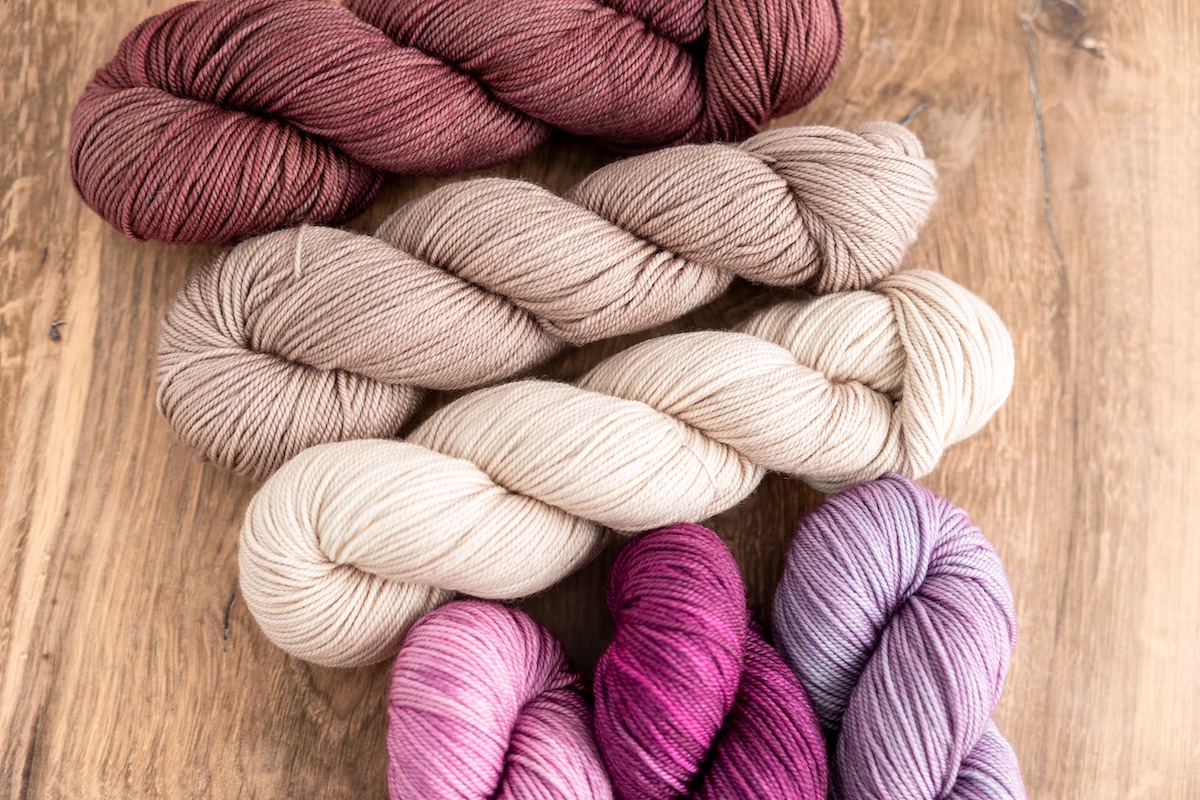
Inspect Your Machine
If you bought a used machine, take a moment to check what came with it. Some items are nearly impossible to replace if they’re missing, especially on older machines.
Carriage
This is essential. The carriage moves across the bed and actually forms the stitches.
Yarn Mast With Tension Guide
Some knitters try to work without it, but consistent tension is key for smooth, consistent fabric. A yarn mast helps maintain that.
Manual
Not only will the manual explain how it is used, but knowing the correct terminology makes it easier to get help and troubleshoot. Always keep the manual nearby if you are new to machine knitting.
Box and Foam Inserts
If you’ve bought a new LK 150, hang onto the box and foam inserts. They’re great for transport and storage, and the serial number is printed on the box if you ever need it for support.
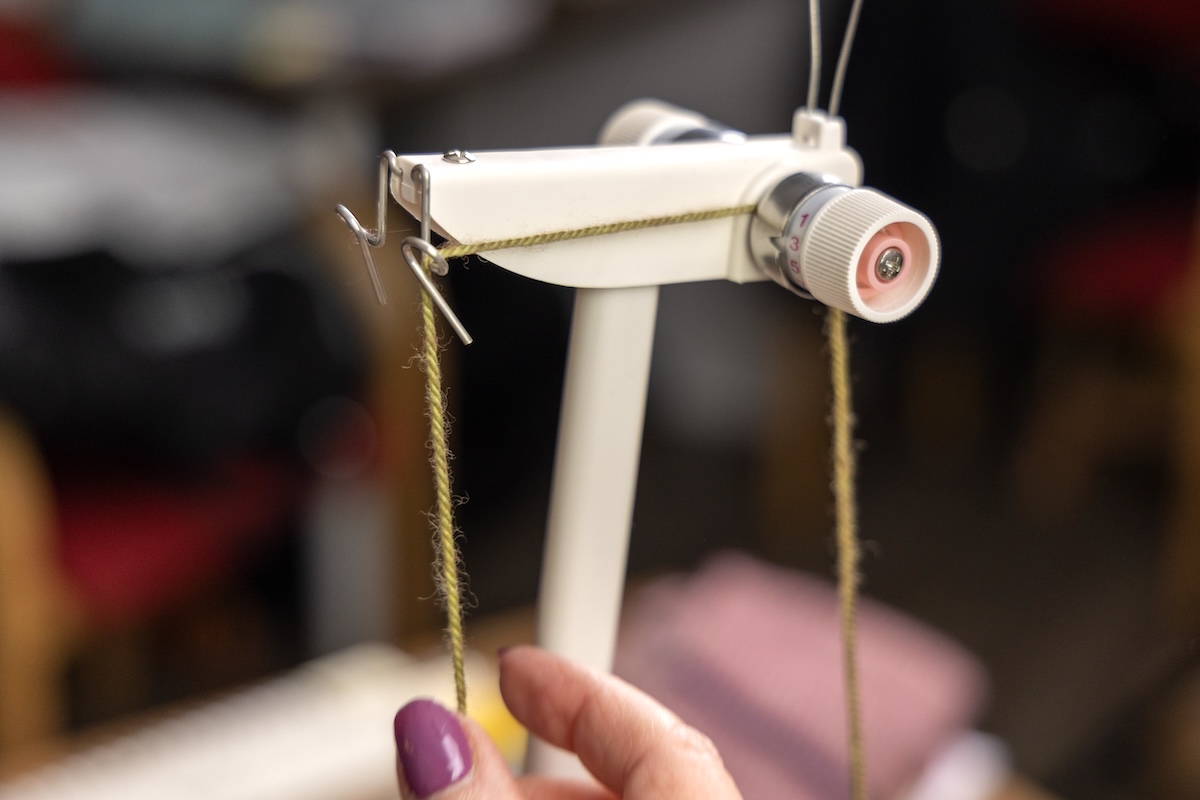
Must-Have Tools (That Usually Come with Your Machine)
Clamps
These keep your machine securely attached to the table. If they’re missing, you might be able to improvise, but it’s best to use the ones made for the machine. Also, make sure your table is sturdy.
Single, 2-Prong, and 3-Prong Transfer Tools
These let you move stitches for increasing, decreasing, cables, and any other reason to move a handful of stitches around. They’re used often, so keep them nearby.
Needle Selector
Lets you move large groups of needles into position all at once. Very handy.
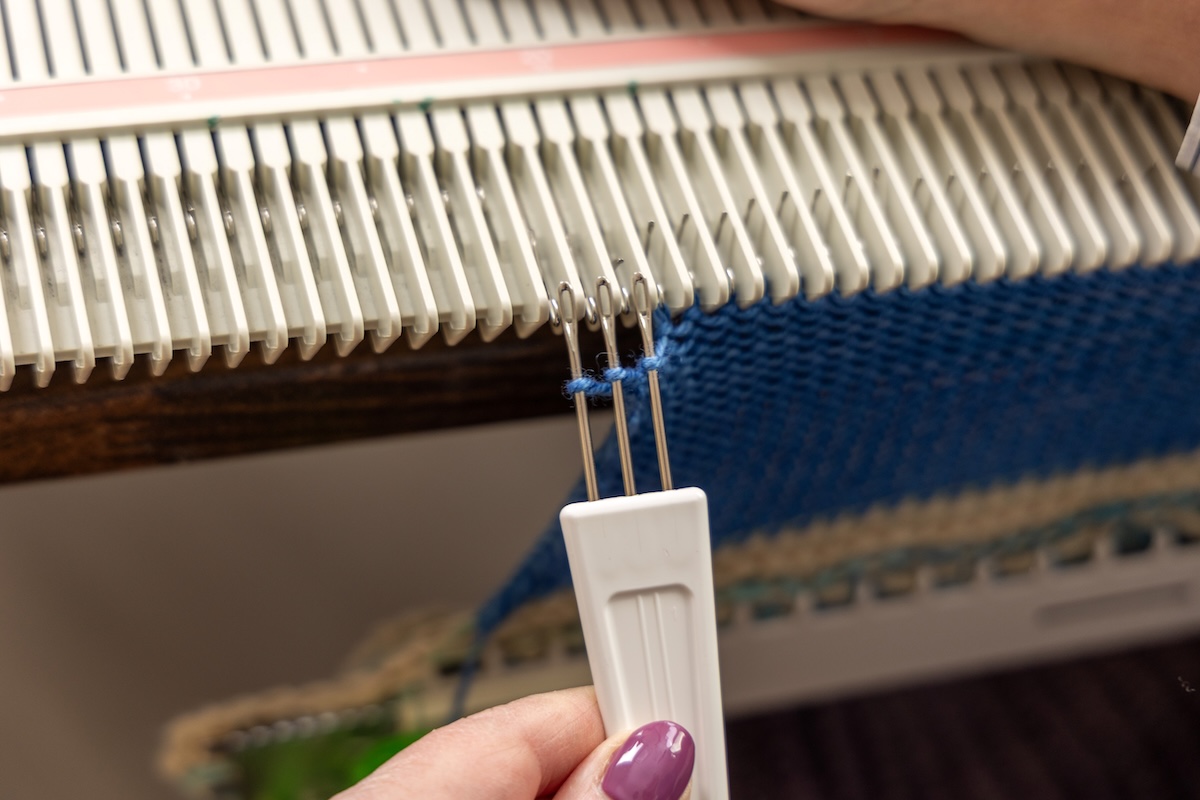
Latch Hook Tool (Also Called a Tappet Tool)
Essential for casting on, fixing mistakes, or reforming dropped stitches.
Cast-On Combs
These provide a bit of weight to help with tension during cast-on and can be used throughout your knitting.
Claw Weights
Ideal for adding weight to the edges of your fabric or anytime you need more tension. It’s worth having extras.
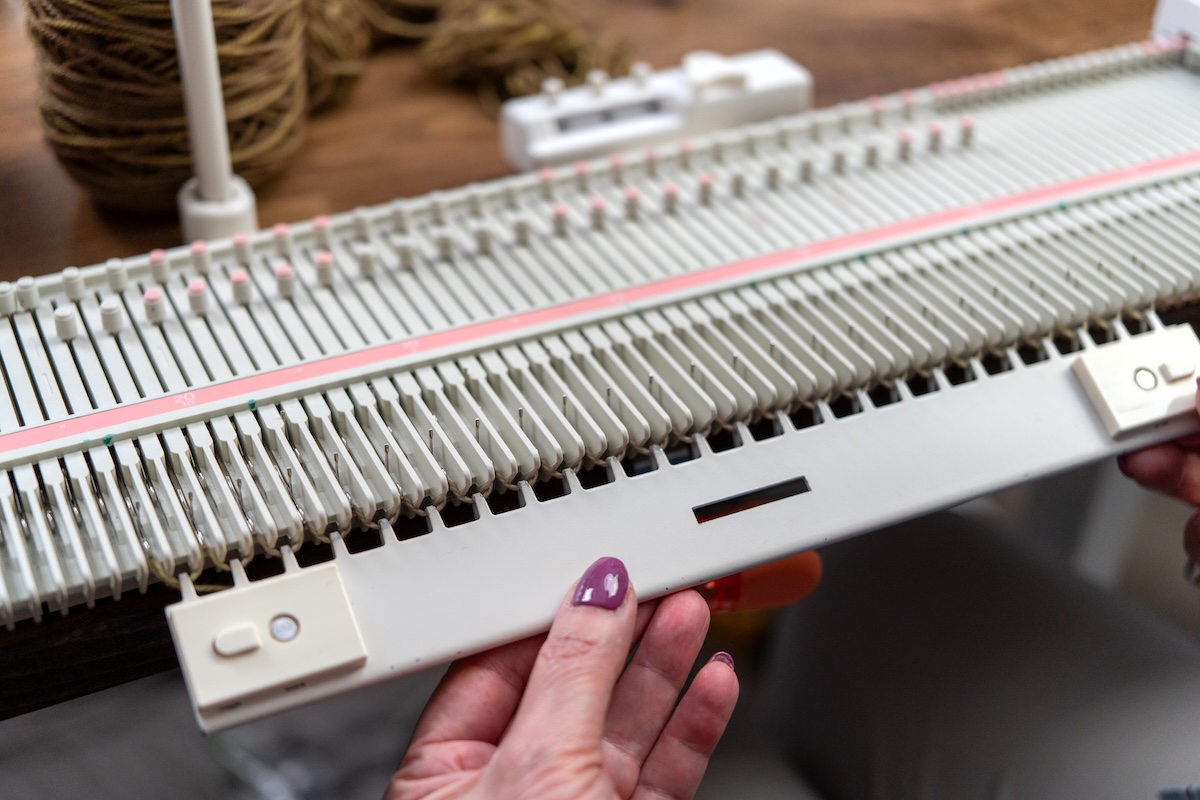
Helpful Extras Often Needed
Not always mentioned in patterns, but we find we are always reaching for these.
Machine Knitting Gauge Ruler
They are designed to be used with specific swatch knitting instructions. Basically, knit a giant swatch, marking the top, bottom, and sides of the area to be measured. The double-sided scale will immediately indicate how many stitches or rows when you measure the marked area. If you don’t have the gauge ruler that came with the machine, a regular ruler works in a pinch, but you will need to count each stitch and row.
Measuring Tape
Essential for garments. A soft, retractable measuring tape is easy to use and tuck away.
Ravel Cord
Running a length of ravel cord in between your cast-on rag and the main fabric can be helpful to quickly remove the cast-on rag after knitting. You can also use ravel cord when you want to put live stitches on hold or move sections around. DMC cotton or braided fishing line works too.
Row Counter
Some machines have built-in counters, but if not, consider a manual or digital version. Just remember to click each pass.
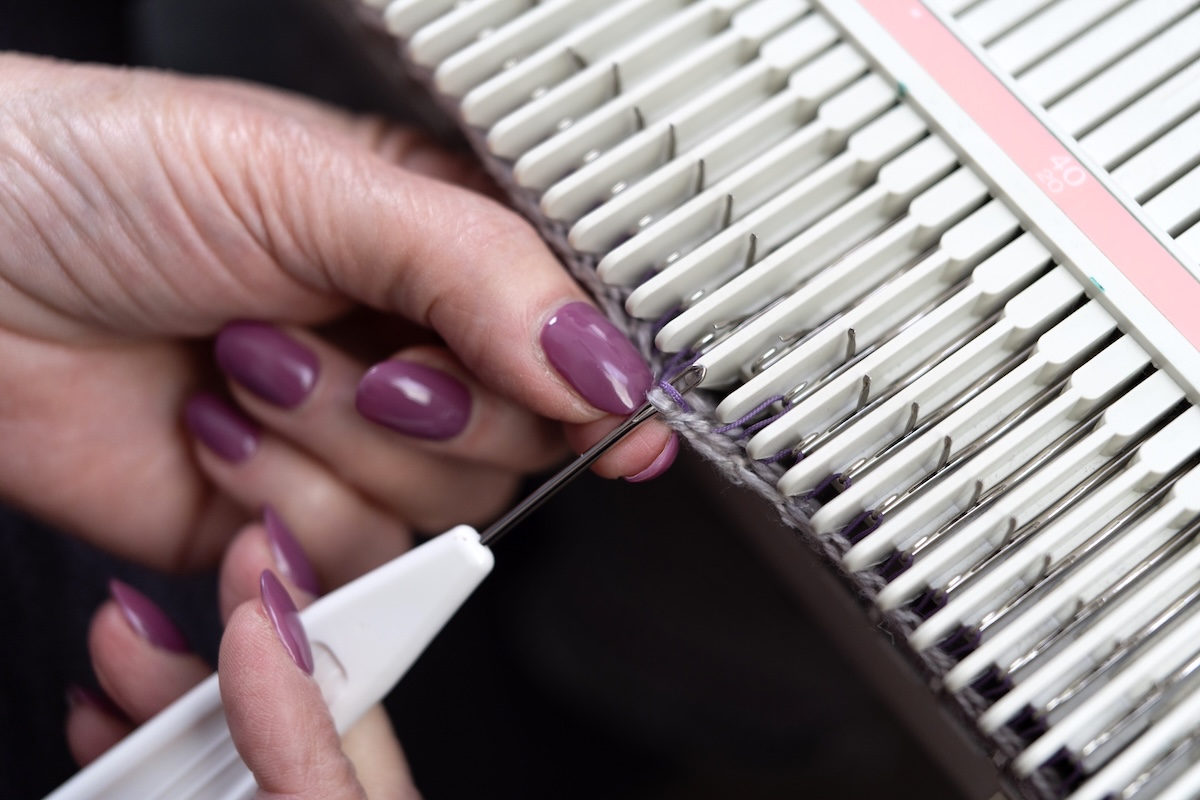
Nice-to-Have Tools
Chart Holder or Magnetic Board
Using a chart holder is great for keeping track of your place in a pattern. A Post-it note on a printed pattern works too. Some prefer digital patterns with markup tools.
Niddy Noddy
If you are winding yarn back from a cake, a niddy noddy can help you make the perfect skein!
Digital Scale and Calculator
Perfect for tracking how much yarn you’ve used or how much is left after a project.
Magnetic Food Clips
Useful for securing yarn ends without them getting in the way.
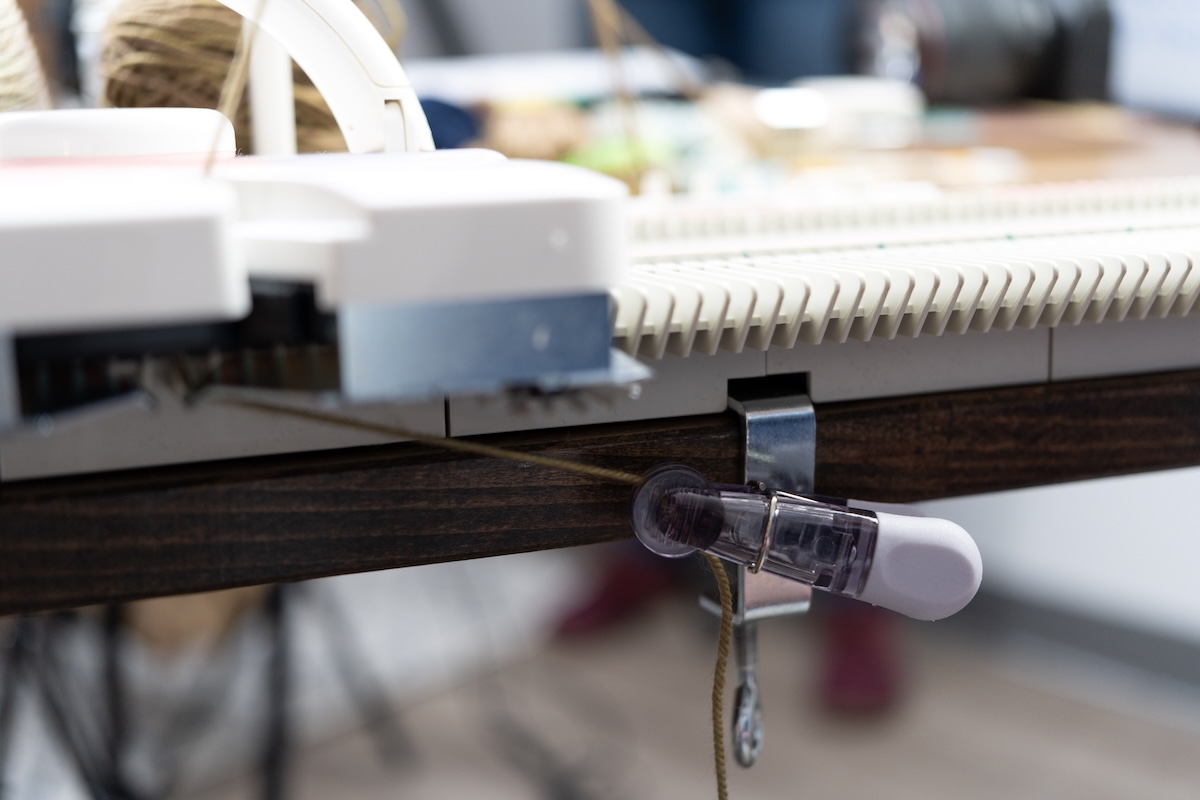
Yarn Swift
If your yarn comes in skeins, you’ll need to wind it into a ball. You can use two chair backs or a friend’s hands, or invest in a yarn swift, also called an umbrella. These hold the skein open while it’s wound into a cake using a ball winder.
Ball Winder
Ball winders come in plastic or wooden versions. The plastic is an easily affordable option, and the wooden ones are easier to fix when broken. A nostepinne is a manual alternative if you prefer a slower, quieter method.
Other Notions
Scissors
Small tapestry scissors work well. No need for anything fancy.
Tapestry Needle
Also known as a darning needle, is used to weave in ends or add embroidery embellishments.
Pen and Paper
Always keep a notebook or project journal handy. Write down row counts, gauge swatches, yarns used, and lessons learned. This helps you replicate successes and avoid repeating mistakes.
Waste Yarn
Essential for starting many projects or creating a cast-on rag. Always keep some nearby.
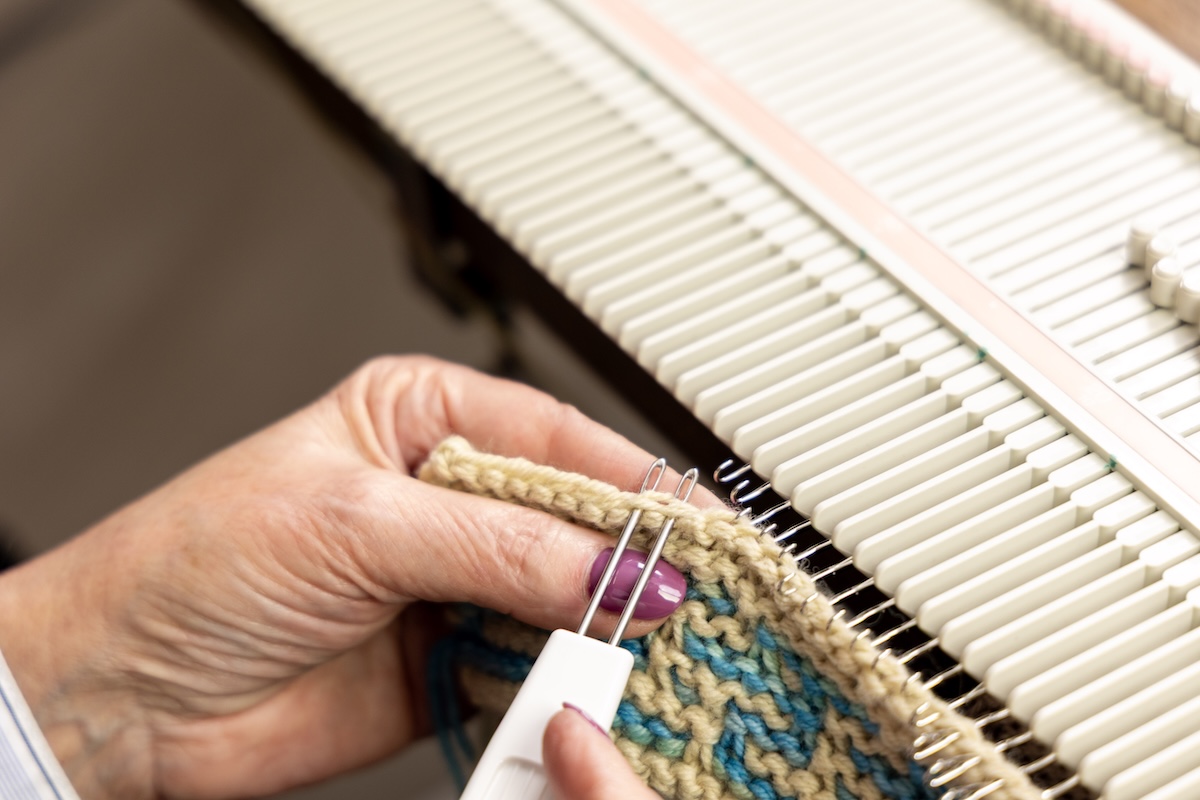
Wet Blocking Tools
Once your project is off the machine, it will need a bit of finishing.
Wool Wash and a Basin
A no-rinse soap like Soak works well. You can use a sink, bowl, or tub.
Spin to Remove Water
Use a salad spinner or your washing machine’s spin cycle. Avoid wringing, which can distort the fabric. Rolling it in towels helps press out more water.
Blocking or T-pins
Great for lace or to shape your fabric.
Blocking Mats
These don’t soak up water and are easy to pin into.
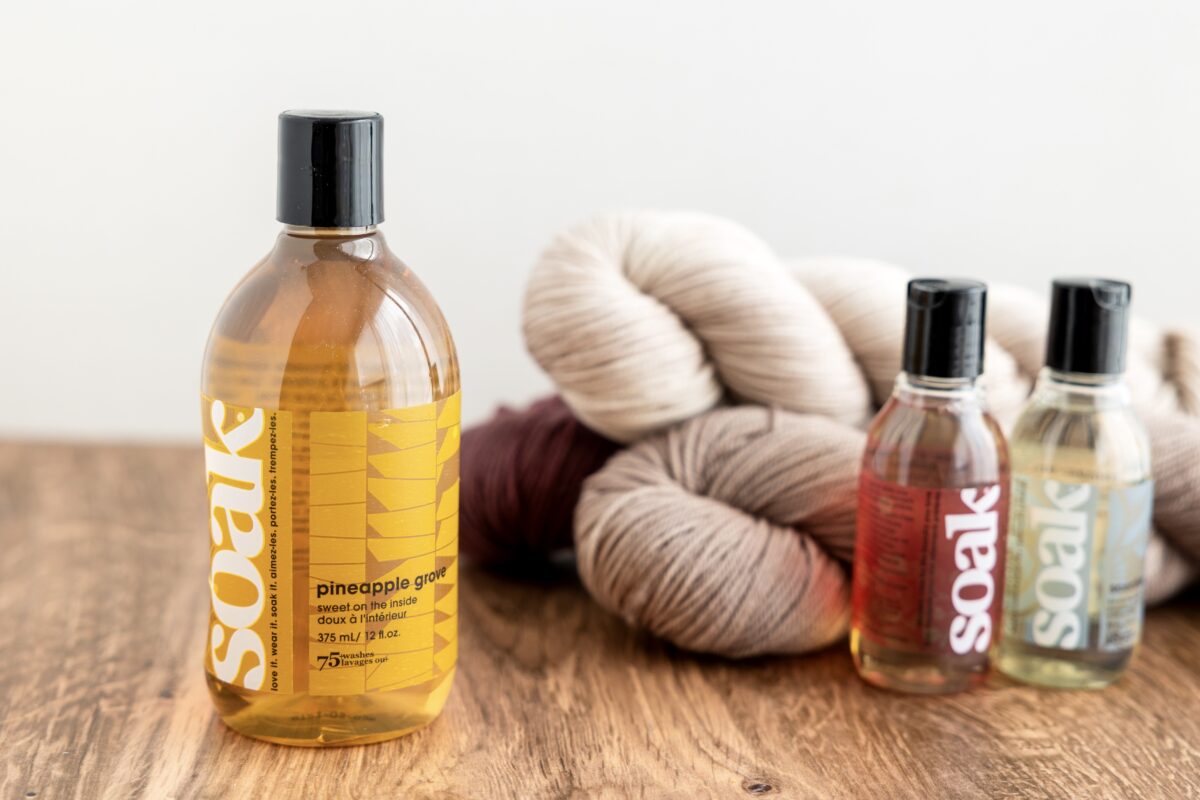
Maintenance Tools
Brush
Some machines come with one. If not, look for a small brush that can remove lint and debris between uses.
Machine Oil
A light oil is usually included, or can be ordered. It helps keep moving parts smoothly.
Cover
Keeps dust off your machine when it’s not in use.
Final Thoughts on Machine Knitting Tools
Getting started with machine knitting is exciting, and having the right tools makes it so much easier. Whether you’re brand new or returning to the craft, we hope this guide helps you feel confident and ready to explore all the possibilities your machine can offer.
Courses to Help On Your Journey
At the School of SweetGeorgia, we have over 100 courses to help you on your fibre arts adventures. From knitting, spinning, crocheting, weaving, dyeing, and more, we are here to help. Here is a list of some of our basic knitting courses:
- Machine Knitting: Basics
- Machine Knitting: Hats (coming 2026)
- Machine Knitting: Lace (coming 2026)
- Machine Knitting: Socks (coming 2026)
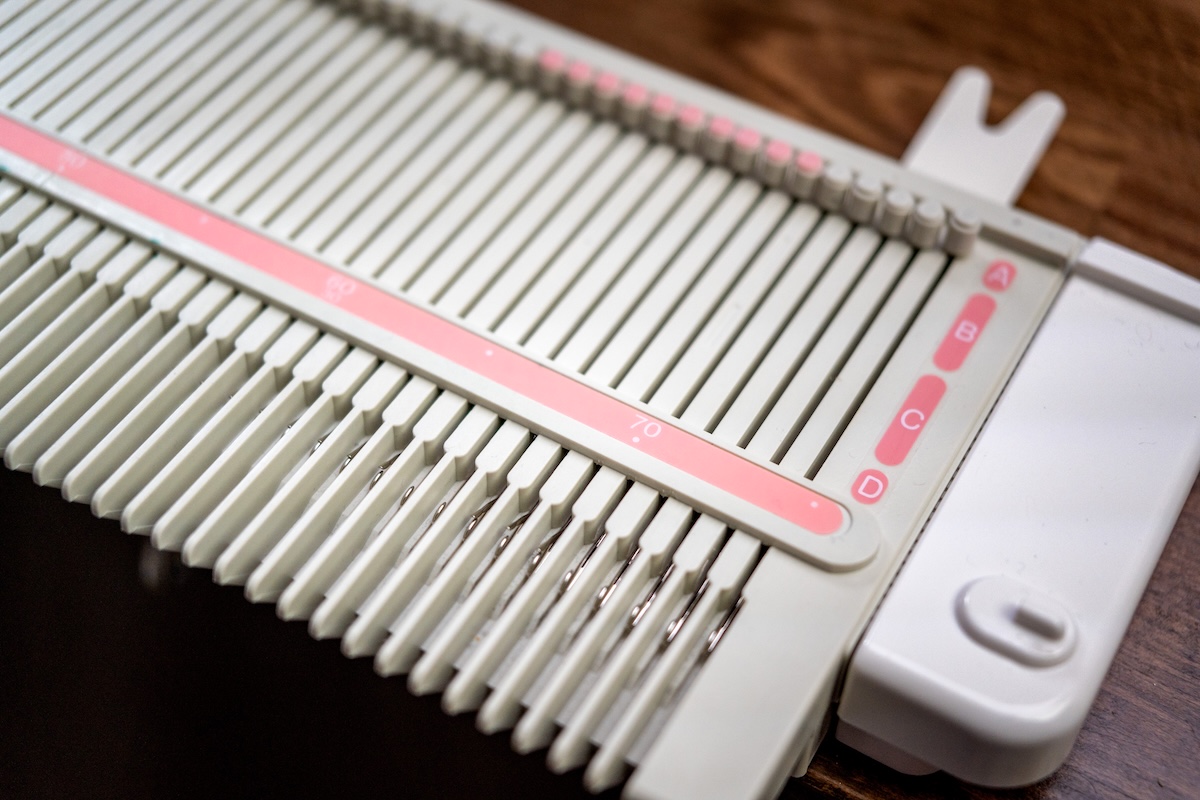
Join Our Community!
- At the School of SweetGeorgia, we’ve built a vibrant and welcoming community of fibre-loving makers, passionate instructors, and dedicated staff. Whether you’re looking for guidance on a new technique or just need a little creative encouragement, we’re here to support you every step of the way.
- Not yet a member of the School? We invite you to come and see what it is all about! Use the code: EXPLORETHESCHOOL to save 15% on an All-Access monthly membership!
- We welcome you to join us in our SweetGeorgia Community. This is where we share projects that inspire, have fibre-filled conversations, host make-alongs, and participate in a variety of virtual meetings! We discuss all things knitting, crocheting, spinning, weaving, machine knitting, and more!
- Want to stay in the loop? Subscribe to our newsletter! It’s a simple way to stay updated on what’s new at SweetGeorgia and the School of SweetGeorgia, catch up on the latest articles, watch new SweetGeorgia YouTube videos, and be a part of our community without any pressure to post. We value your presence, no matter how you choose to connect with us!
Let us know if there’s a machine knitting tool you love that we missed!
Checklist
Here is a quick checklist you can use to see what you have, need, and want!
The post Essential Machine Knitting Tools & Accessories appeared first on SweetGeorgia Yarns.
Comments
Post a Comment